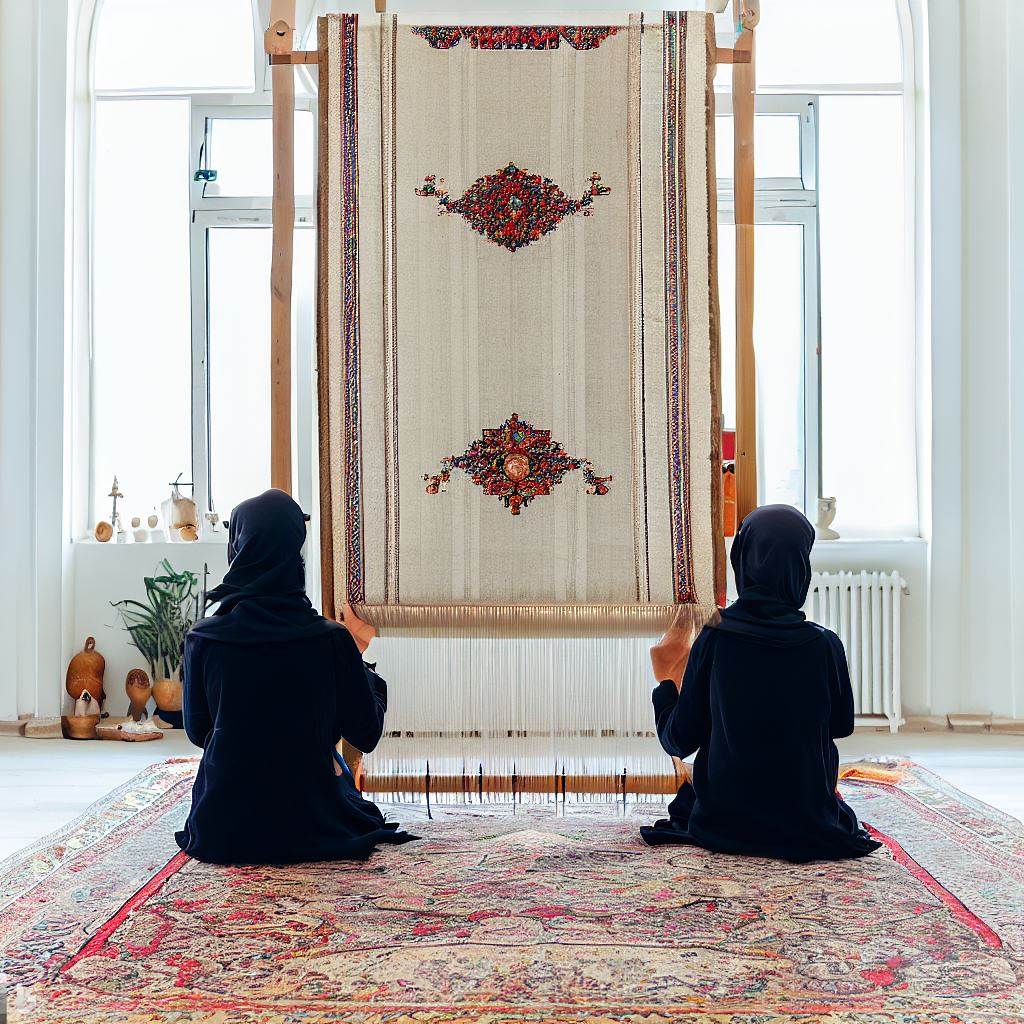Rug Weaving and Nature: Drawing Inspiration from Natural Elements
Honoring Fibers From Their Natural Source
Rug weaving remains deeply connected to the natural landscapes yielding dyes, textures, and symbols that shape handmade textiles. Each fiber and hue stems from roots in the land.
Lofty wool piled in sheep pastures embodies wandering clouds above hills. Silky sheen of alpaca and mohair evokes misty streams winding through meadows. Sturdy jute and hemp mirror the soil’s strength.
Natural dyes distilled from barks, roots, and insects reflect the seasons’ palettes. Weavers commune with nature’s essence through their craft passed down through generations who tended the land’s gifts.
Understanding materials as precious gifts of the earth instills rug making with deeper meaning and stewardship. The hands learn to honor what the land provides.
Imitating and Evoking Elements in Artistic Rugs
Many textile artists seek to recreate nature’s beauty using handwoven rugs as their canvas. Scenes from landscapes, flowers, and animals grace intricate tapestries.
Mottled yarns dyed in hues of moss and bark form woven forests. Shaggy wool fringes become grassy fields. Shimmering silk rivers flow through verdant cotton valleys. Pairs of doves adorn wedding tapestries.
Abstract interpretations of natural elements also bring their textures into home décor. Wavy lines undulate like windswept dunes. Gentle ombre evokes sunrise over mountains. Organic freeform shapes reflect intuitive growth.
Weavers notice inspiration everywhere around them. Even modest floor coverings charm as lush cooperative gardens or impressionist watercolor meadows woven from creative spirit.
Ancient Nature-Based Motifs and Symbols
The designs embellishing handwoven rugs hold deep roots in ancient nature motifs passed down across generations. Their patterns reflect harmony with the natural order.
Repeated geometric shapes mirror organic fractals occurring through the cosmos. Celestial symbols honor the heavens’ mysteries. Flora and fauna represent life’s interconnectedness.
Ancestral pagan motifs like circles, spirals, and trees of life celebrate fertility and the sacred feminine. Mandalas balance the human spirit within concentric universes.
By reviving heritage forms, weavers maintain mindfulness of humanity’s place within the great chain of being. Their rugs evoke living in tune with the seasons and cycles ever unfolding.
Natural Dyeing Reflects Seasonal Landscape Hues
Employing natural dyes integrates rug making into the seasonal rhythms of the surrounding landscape. Palettes shift with each harvest.
In spring, dyers gather green walnuts and golden chamomile. Summer offers up indigo, madder, and cochineal’s crimson. Autumn provides deep hues from black walnuts and rusty marigolds.
Processing pigments repeats rituals passed down generations who foraged the same hills. Understanding origins of each color connects weavers to place. Subtle tonal variations make every batch unique.
This cyclical mirroring of local ecology on skeins gives deeper meaning to working with the land. Nature’s infinite complexity and wisdom shine through.
Sustainable Materials and Production Methods
Eco-consciousness leads many weavers back to natural fibers and ethical production methods. Rug making offers an antidote to disposability and waste.
Shepherds sell directly to spinners, minimizing processing and packaging. Undyed wool and cotton give hues a healthy subtlety. Dyes come from renewable botanical sources, not synthetics.
Weavers compost trimmings for enrichment or find uses like stuffing for pillows. Repairing worn vintage rugs saves from landfills. Passing tools and looms on preserves resources.
Centering sustainability allows rug making’s future to reunite with enduring pastoral origins. The craft nurtures cultural and ecological balance for generations to come.
Rug Motifs Inspired By Sacred Geometry
Textile patterns often reflect geometric proportions believed to hold sacred powers and connect humanity to the cosmos. These mathematical ratios bring balance and order.
Golden rectangles, Fibonacci spirals, and fractal symmetries occur throughout nature’s forms. Repeating their relationships in rugs evokes the perfection of creation unfolding.
Rotating motifs in circular mandalas conveys the cosmos’ cycles and spheres. Triangular edges represent sacred mountains while octagons mirror harvest. Interlocking shapes convey unity.
Meditating through weaving on the geometry underlying existence brings rug makers peace and humility before the mysteries of being. The legacy of order and wisdom continues.
For cultures worldwide, rug weaving connects through metaphor and materials to humanity’s dependence on the land. Patterns echo nature’s perfection while dyes spring from forests and fields. Recalling this timeless bond centers spirit. Rug makers walk in communion with the elements, gathering sustenance for looms as those before walked the same landscapes. Their devoted hands transform gifts of the earth into functional artworks resonating with the beauty of creation.
